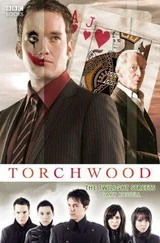Still, it would be wrong to suggest that Baltimore’s juries have become more lenient simply because they have become more black. Suspicion of the legal system within the black community is a real phenomenon, but veteran prosecutors can tell you that some of the best panels they’ve ever had have been all-black, whereas some of the worst and most indifferent have had a white majority. More than color, what has crippled the jury system in Baltimore is a factor that crosses all racial boundaries: television.
Pick any twelve people from Baltimore-from the black sections of Ashburton and Cherry Hill, from all-white Highlandtown or Hamilton-and chances are, you will come up with a few intelligent, discerning citizens. Some may have finished high school, one or two may have been to college. Most will be working folk, only a few will be skilled professionals. Baltimore is a blue-collar town, a stretch of the East Coast rust belt that never recovered when American steel and shipping began their downward spirals. Its population is underemployed, and it remains one of America’s most undereducated cities. Taxpayer flight has continued for more than two decades, and the vast majority of Baltimore’s white and black middle and upper classes now reside outside the city proper. They are, in essence, the stuff from which county juries are made.
As a result, most city folk go into a jury room with no greater sophistication about crime and punishment than can be gleaned from a 19-inch television screen. More than anything else, it’s the cathode-ray tube-not the prosecutor, not the defense attorney, certainly not the evidence-that gives a Baltimore juror his mind-set. Television ensures that criminal juries are empaneled with ridiculous expectations. Jurors want to see the murder-see it played out in front of their eyes on videotape in slow motion or, at the very least, see the guilty party fall to his knees at the witness stand, begging for mercy. Never mind that fingerprints are recovered in less than 10 percent of criminal cases, the average juror wants fingerprints on the gun, fingerprints on the knife, fingerprints on every door handle, window and house key. Never mind that the trace lab rarely makes a case, a juror nonetheless wants to see hairs and fibers and shoe prints and every other shard of science gleaned from Hawaii Five-O reruns. When a case does come complete with an excess of witnesses and physical evidence, then jurors demand a motive, a reason, a meaning to a murder that has otherwise been proven. And on those rare occasions when jurors are satisfied that the right man has actually been locked up for the right murder, they want to be assured that the defendant is truly a bad person and that they themselves are not bad people for doing this terrible thing to him.
To provide, in real life, the utter certainty about crime and culpability that pervades television is impossible. Nor is it easy to rid a juror of such expectations, although veteran prosecutors never lack for trying. In Baltimore, state’s attorneys routinely call fingerprint experts to the stand in those cases in which no fingerprint evidence exists:
If you would, please explain to the jury how often fingerprints are recovered at crime scenes and how often they are not recovered. Explain how it is that many people, depending on their biochemistry at the time of the incident, do not leave detectable fingerprints. Explain how fingerprints can be obliterated and smudged. Explain how atmospheric conditions affect fingerprints. Explain just how rare it is to pull a fingerprint off a knife hilt or gun butt.
Similarly, the detectives themselves come to the stand to fight a losing battle with the last six episodes of L.A. Law and other network fare in which the lawyers-better-looking lawyers than we have in court today, mind you-always parade before the jury with guns and knives bagged and tagged and labeled Exhibit 1A.
A good defense attorney can blow ten minutes of smoke by glaring at a detective who tries to explain that weapons have a nasty habit of leaving the crime scene before the police arrive.
You mean you never recovered the murder weapon? This jury is supposed to convict my client without a murder weapon? What do you mean, it could be anywhere? Are you trying to tell us that after committing an act of murder, the defendant might have actually run away? And taken the gun with him? And then hidden it? Or thrown it from the Curtis Bay bridge?
On Columbo, the gun is always in the liquor cabinet behind the vermouth. But you didn’t check behind the defendant’s vermouth, did you, detective? No, you don’t have the murder weapon. Your honor, I move that we unshackle this poor innocent waif and send him back to his loving family.
In the minds of Baltimore’s prosecutors and detectives, at least, television has utterly shattered the notion of a thinking jury, strangled it with plot lines in which all ambiguity is obliterated and all questions answered. As a result, those charged with punishing the act of murder in Baltimore no longer believe in all that Norman Rockwell business about twelve angry men in shirtsleeves, arguing in sticky heat over the essential evidence. In the real world, it’s more like a dozen brain-deads telling each other that the defendant seems like a nice, quiet young man, then laughing at the prosecutor’s choice of tie. Defense attorneys are quick to call such thinking sour grapes, but in truth, the faithlessness that veteran prosecutors and detectives feel for the jury system goes deeper than that. The argument isn’t that the government should win every murder trial; the system isn’t built that way. But does anyone really believe that 45 percent of the homicide defendants brought to a court trial-the last stretch of the legal system’s long, thinning bottleneck-are in fact innocent?
As a consequence, city juries have become a deterrent of sorts to prosecutors, who are willing to accept weaker pleas or tolerate dismissals rather than waste the city’s time and money on cases involving defendants who are clearly guilty, but who have been charged on evidence that is anything less than overwhelming. Naturally, a competent defense attorney or public defender understands that in most cases, a jury trial is the last thing a city prosecutor wants, and he uses this leverage when he bargains for his client.
For the detectives, the decision to plea or dismiss a case is the flashpoint in their ongoing love-hate relationship with the state’s attorney’s office. True, thinks a detective, these people are on our side. True, they’re working to put bad guys in prison at half the salary they might get at an outside firm. True, they’re looking for the same justice we are. But brotherly feelings are out the window when a young assistant state’s attorney, two years out of the University of Baltimore School of Law, gives up on a drug murder that took three weeks to develop. When that happens, the chip goes right back on the shoulder: I busted my ass to get reluctant witnesses into the grand jury, and what for? Just so this goof with pinstripes and a power tie could dump it on the stet docket? Hell, he didn’t even have balls enough to pick up a phone and call me, much less ask how the damn file might be salvaged.
Some of the cases are weak and should be dumped, no doubt about that. Some of them arrived at the courthouse as viable prosecutions, only to self-destruct once the witnesses started backing up. Any homicide detective knows that most basic truth: Shit happens. But he also believes that too many borderline cases, and even a few that are healthy, manage to slip through the cracks, particularly with less experienced attorneys.
A good detective will excuse some of it as understandable and inevitable. As is true elsewhere, the Baltimore state’s attorney’s office is chronically understaffed and underfunded; its trial division is manned by a core of competent veterans and a slew of recent arrivals-younger lawyers who have worked their way up to felony violence after a few years in the district courts. Some will be good trial lawyers, some could go either way, and a few are genuinely dangerous in a courtroom. A detective hopes for a competent prosecutor, but he understands that the system runs by triage. The homicides are parceled out with an eye toward keeping the major cases-those involving true victims or those in which the defendant is suspected or charged with multiple crimes-in the hands of veteran attorneys. The hope is that in the most critical cases, the prosecutor will not be outclassed or intimidated by the coterie of experienced defense attorneys who by private retainer or court appointment always gravitate to city homicide cases.
Читать дальше












